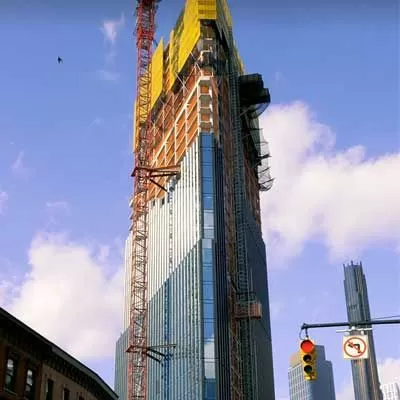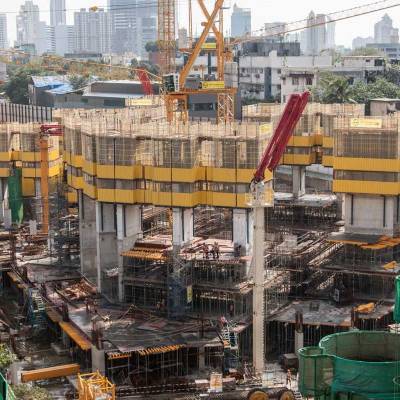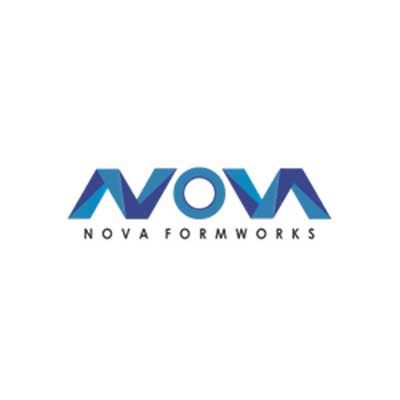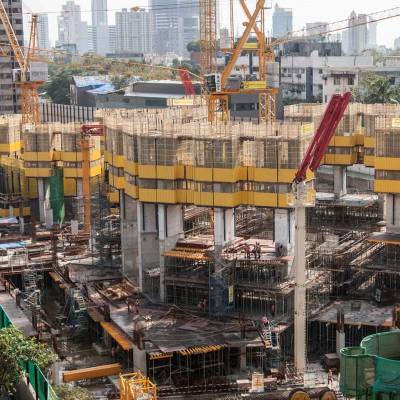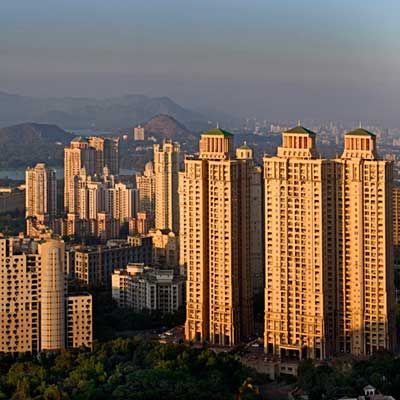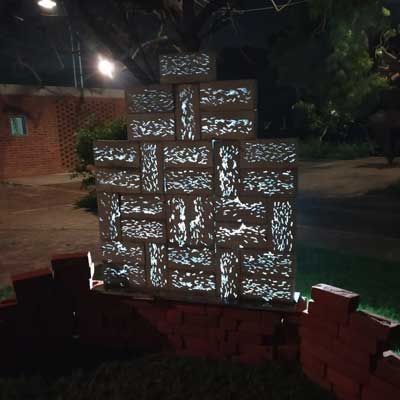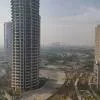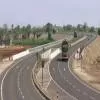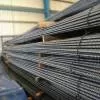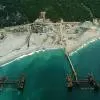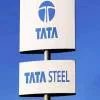- Home
- Building Material
- Formwork
- In Great Form!

In Great Form!
Will the recent Budget boost construction activities and, hence, demand for cement, concrete and allied products like formwork?
'Yes,' responds Jatinder Pal Singh, Managing Director, Doka India, 'because this year's Budget's major focus was infrastructure, mass housing and rural development.' Sushil Sahani, Managing Director, Pranav Construction Systems, agrees, saying, 'Higher government spending on infrastructure and housing will increase demand for formwork.' And Raj Lakhani, Managing Director, Peri India, says, 'Giving infrastructure status and, hence, benefits and tax exemptions to the affordable housing segment would attract more developers and investment, and promote construction activity across the country and demand for advanced formwork systems used for faster and safe construction. Interest subsidies will create better options for first-time buyers and make home loans feasible. We aspire to be a major contributor towards this growth with our diverse product and service offerings.'
So far, however, the demand for formwork has seen no impact. 'We have seen no specific effect on the construction sector as a result of the recent Budget, and nor has it had any effect on the formwork market,ö says Surajit Ray, Managing Director, Ulma Formworks.
Customised for unusual shapes
Unusually shaped buildings can create construction challenges, necessitating formwork providers to come up with unique customised solutions. According to Singh, some design variations that require customised formwork are varying slab thickness because most climbing formwork is available for a preset thickness; curvy periphery beams because this does not allow the guiding shoe to be fixed on the beam; sunken slabs because these cannot take the platform load so an alternative needs to be found for the floor support shoe; and walls that are less thick than what is designated for standard stop anchors (160 mm for Doka systems).
In one challenging project,
Doka worked around these issues by introducing reusable special climbing cones for the differing thicknesses and designing retractable steel shutters for the curved peripheral beam side, to be attached with the protection screen plus one level platform with the help of the adjacent non-structural walls and, in certain instances, without walls. Sunken slabs were handled by providing the floor support a special extension shoe while less thick walls were handled with special arrangements too.
To construct the uniquely-shaped window chajjas of a Mumbai high rise in Worli, Ulma developed special steel formwork attachable with the Ulma HWS windscreen system that had been deployed to protect the periphery of the slab. 'For convenience and efficiency, we designed a system that accommodated the lifting of the customised formwork along with hydraulic lifting of the wind protection and safety screen system,ö says Ray. 'This in turn allowed the chajjas to be cast simultaneously when the windscreen system was at the relevant level.'
Customised Peri formwork helped construct a massive concrete wind turbine foundation of 3.30-m height and 21-m diameter in Bijapur, Karnataka, which featured numerous corbels to support the superstructure.
Get in form, pick up speed
Prior to starting the construction of Spira Tower, an 80-storey, mixed-use, 310-m high-rise tower in Noida, featuring a challenging elliptical shape both on the outer face and inner core, with two dedicated lift clusters as well as 16 columns, contractor Arabian Construction Company and developer Supertech engaged with Doka to come up with a vertical climbing formwork solution that would enable a cycle to be completed in seven days.
'Our target was to complete a minimum three slabs in a month, so we allocated seven to 10 days for each,' shares Yogendra Shringi, Senior Engineer, Arabian Construction Company.'We proposed splitting the core wall in two parts, casting one after the other, reusing all the resources on site with no idling of manpower so that both the core walls touched the same level at end of the cycle,' says Singh.
Doka's fully automatic SCP400 platforms were used for the inner side to support the climbing boom placer. To help manage the stepped wall thickness, the SKE50 was deployed for the outer side of the core walls. Doka large-area customisable formwork Top 50 in tandem with climbing formwork SKE100 was proposed for the external lift core walls located on periphery of the structure, and the SKE 50 for climbing 16 columns of different sizes 7m + 1.5 m to 4 m + 1.2 m. Another key challenge was to enable the workers at the same level to move between the systems. 'We have several teams simultaneously working on the 16 columns and core walls of the building that need to share materials and move from one location to another, so having a connecting platform at every level would be a great time saver,ö says Shringi. 'We created connecting bridges in between the system to facilitate the casting and jumping sequence,' shares Singh.
Challenges arose as well in casting the slabs of Spira Tower, in particular, because the elliptical-shaped floor features changing coordinates at the apex for a spiral look. Arabian Construction Company made use of Ulma's CC4 drop head panel system as slab formwork while Ulma's specially designed customised vertical curved panel resting on the table formwork at the slab edge helped cast the periphery of the cantilever slab and beams to match its geometry. 'We have deployed a luffing crane to shift the 58 tables and other material, 29 tables for one typical floor; we have two VR table sets,ö says Shringi. 'Keeping an extra set has allowed us to start the shuttering work the very next day after pouring the slab and thus achieve a slab-to-slab cycle time of seven to 10 days.'
Customised formwork = greater expense?
Customised formwork that can help contractors construct speedily may or may not cost more than regular formwork. During the construction of the Agra-Lucknow Expressway, a 302-km, controlled-access highway including a passenger underpass, vehicular underpass and minor bridges of height varying from 5.50 m to 8.80 m, the key challenge was to cast the walls and the haunch at the top of the wall in a single pour.
'A customised Peri solution including Vario wall formwork helped cut the cycle time from 10 days, which is what it would have taken with conventional shutters, to three-and-a-half days, thus considerably reducing the overall construction time, with the project-specific customised formwork costing 15-20 per cent more than the regular formwork,' says Lakhani.
According to Sahani, 'Customisation or better formwork does not increase the cost; instead, it reduces it.' He explains how: 'Usually, customisation entails the use of hydraulics that reduces the need for manpower, speeds up de-shuttering, eases operations and improves safety as the formwork is operated by jacks.ö Citing the Riyadh Metro, where Pranav Construction Systems provided customised (hydraulic-operated) formwork to cast the long line, Sahani says customisation increased the direct cost by 30 per cent but reduced the labour cost by 40 per cent, thus reducing the overall cost.
Few companies are geared up to develop in-house formwork but HCC does so - and at a lower cost too.
'While constructing the reactor building for the Kudankulam nuclear power plants, we had to use two different kinds of formworks, as the design of the walls of the building was totally different than its dome,ö says Jagdish Siddamal, General Manager, Engineering, HCC. 'The inner and outer containment wall is a 44-m cylindrical wall with a diameter of 44 m and 47 m respectively and 1.2 m in thickness. This construction was done in eight tiers with a maximum height of 6.5 m. Construction of these tiers was fairly easy at the ground level but as the elevation increased, managing the inventory was difficult. We used specially designed lightweight Doka formworks that helped us ease this process.'
To construct the outer containment dome, unlike the walls, construction had to be done in one go to achieve the shape and strength to the concrete. 'HCC's design team developed a formwork in house especially for this structure at substantially less cost and in almost half the time needed to procure,' adds Siddamal. Now, that's some good form!
QUICK BYTES
- Higher government spending on infrastructure and housing to increase demand for formwork.
- Unusually shaped buildings can necessitate formwork providers to offer customised solutions.
- Few companies are geared up to develop in-house formwork.
- Charu Bahri
To share your insights on the market for Scaffolding and Formwork, write in at feedback@ConstructionWorld.in
Without the right formwork, you can neither construct unusually shaped structures nor pick up speed. And customised formwork does not always mean spending more. Will the recent Budget boost construction activities and, hence, demand for cement, concrete and allied products like formwork? 'Yes,' responds Jatinder Pal Singh, Managing Director, Doka India, 'because this year's Budget's major focus was infrastructure, mass housing and rural development.' Sushil Sahani, Managing Director, Pranav Construction Systems, agrees, saying, 'Higher government spending on infrastructure and housing will increase demand for formwork.' And Raj Lakhani, Managing Director, Peri India, says, 'Giving infrastructure status and, hence, benefits and tax exemptions to the affordable housing segment would attract more developers and investment, and promote construction activity across the country and demand for advanced formwork systems used for faster and safe construction. Interest subsidies will create better options for first-time buyers and make home loans feasible. We aspire to be a major contributor towards this growth with our diverse product and service offerings.' So far, however, the demand for formwork has seen no impact. 'We have seen no specific effect on the construction sector as a result of the recent Budget, and nor has it had any effect on the formwork market,ö says Surajit Ray, Managing Director, Ulma Formworks. Customised for unusual shapes Unusually shaped buildings can create construction challenges, necessitating formwork providers to come up with unique customised solutions. According to Singh, some design variations that require customised formwork are varying slab thickness because most climbing formwork is available for a preset thickness; curvy periphery beams because this does not allow the guiding shoe to be fixed on the beam; sunken slabs because these cannot take the platform load so an alternative needs to be found for the floor support shoe; and walls that are less thick than what is designated for standard stop anchors (160 mm for Doka systems). In one challenging project, Doka worked around these issues by introducing reusable special climbing cones for the differing thicknesses and designing retractable steel shutters for the curved peripheral beam side, to be attached with the protection screen plus one level platform with the help of the adjacent non-structural walls and, in certain instances, without walls. Sunken slabs were handled by providing the floor support a special extension shoe while less thick walls were handled with special arrangements too. To construct the uniquely-shaped window chajjas of a Mumbai high rise in Worli, Ulma developed special steel formwork attachable with the Ulma HWS windscreen system that had been deployed to protect the periphery of the slab. 'For convenience and efficiency, we designed a system that accommodated the lifting of the customised formwork along with hydraulic lifting of the wind protection and safety screen system,ö says Ray. 'This in turn allowed the chajjas to be cast simultaneously when the windscreen system was at the relevant level.' Customised Peri formwork helped construct a massive concrete wind turbine foundation of 3.30-m height and 21-m diameter in Bijapur, Karnataka, which featured numerous corbels to support the superstructure. Get in form, pick up speed Prior to starting the construction of Spira Tower, an 80-storey, mixed-use, 310-m high-rise tower in Noida, featuring a challenging elliptical shape both on the outer face and inner core, with two dedicated lift clusters as well as 16 columns, contractor Arabian Construction Company and developer Supertech engaged with Doka to come up with a vertical climbing formwork solution that would enable a cycle to be completed in seven days. 'Our target was to complete a minimum three slabs in a month, so we allocated seven to 10 days for each,' shares Yogendra Shringi, Senior Engineer, Arabian Construction Company.'We proposed splitting the core wall in two parts, casting one after the other, reusing all the resources on site with no idling of manpower so that both the core walls touched the same level at end of the cycle,' says Singh. Doka's fully automatic SCP400 platforms were used for the inner side to support the climbing boom placer. To help manage the stepped wall thickness, the SKE50 was deployed for the outer side of the core walls. Doka large-area customisable formwork Top 50 in tandem with climbing formwork SKE100 was proposed for the external lift core walls located on periphery of the structure, and the SKE 50 for climbing 16 columns of different sizes 7m + 1.5 m to 4 m + 1.2 m. Another key challenge was to enable the workers at the same level to move between the systems. 'We have several teams simultaneously working on the 16 columns and core walls of the building that need to share materials and move from one location to another, so having a connecting platform at every level would be a great time saver,ö says Shringi. 'We created connecting bridges in between the system to facilitate the casting and jumping sequence,' shares Singh. Challenges arose as well in casting the slabs of Spira Tower, in particular, because the elliptical-shaped floor features changing coordinates at the apex for a spiral look. Arabian Construction Company made use of Ulma's CC4 drop head panel system as slab formwork while Ulma's specially designed customised vertical curved panel resting on the table formwork at the slab edge helped cast the periphery of the cantilever slab and beams to match its geometry. 'We have deployed a luffing crane to shift the 58 tables and other material, 29 tables for one typical floor; we have two VR table sets,ö says Shringi. 'Keeping an extra set has allowed us to start the shuttering work the very next day after pouring the slab and thus achieve a slab-to-slab cycle time of seven to 10 days.' Customised formwork = greater expense? Customised formwork that can help contractors construct speedily may or may not cost more than regular formwork. During the construction of the Agra-Lucknow Expressway, a 302-km, controlled-access highway including a passenger underpass, vehicular underpass and minor bridges of height varying from 5.50 m to 8.80 m, the key challenge was to cast the walls and the haunch at the top of the wall in a single pour. 'A customised Peri solution including Vario wall formwork helped cut the cycle time from 10 days, which is what it would have taken with conventional shutters, to three-and-a-half days, thus considerably reducing the overall construction time, with the project-specific customised formwork costing 15-20 per cent more than the regular formwork,' says Lakhani. According to Sahani, 'Customisation or better formwork does not increase the cost; instead, it reduces it.' He explains how: 'Usually, customisation entails the use of hydraulics that reduces the need for manpower, speeds up de-shuttering, eases operations and improves safety as the formwork is operated by jacks.ö Citing the Riyadh Metro, where Pranav Construction Systems provided customised (hydraulic-operated) formwork to cast the long line, Sahani says customisation increased the direct cost by 30 per cent but reduced the labour cost by 40 per cent, thus reducing the overall cost. Few companies are geared up to develop in-house formwork but HCC does so - and at a lower cost too. 'While constructing the reactor building for the Kudankulam nuclear power plants, we had to use two different kinds of formworks, as the design of the walls of the building was totally different than its dome,ö says Jagdish Siddamal, General Manager, Engineering, HCC. 'The inner and outer containment wall is a 44-m cylindrical wall with a diameter of 44 m and 47 m respectively and 1.2 m in thickness. This construction was done in eight tiers with a maximum height of 6.5 m. Construction of these tiers was fairly easy at the ground level but as the elevation increased, managing the inventory was difficult. We used specially designed lightweight Doka formworks that helped us ease this process.' To construct the outer containment dome, unlike the walls, construction had to be done in one go to achieve the shape and strength to the concrete. 'HCC's design team developed a formwork in house especially for this structure at substantially less cost and in almost half the time needed to procure,' adds Siddamal. Now, that's some good form! QUICK BYTES Higher government spending on infrastructure and housing to increase demand for formwork. Unusually shaped buildings can necessitate formwork providers to offer customised solutions. Few companies are geared up to develop in-house formwork. - Charu Bahri To share your insights on the market for Scaffolding and Formwork, write in at feedback@ConstructionWorld.in


